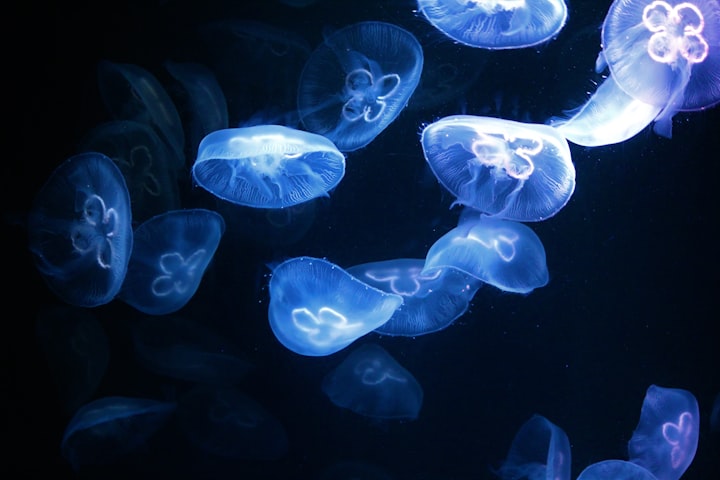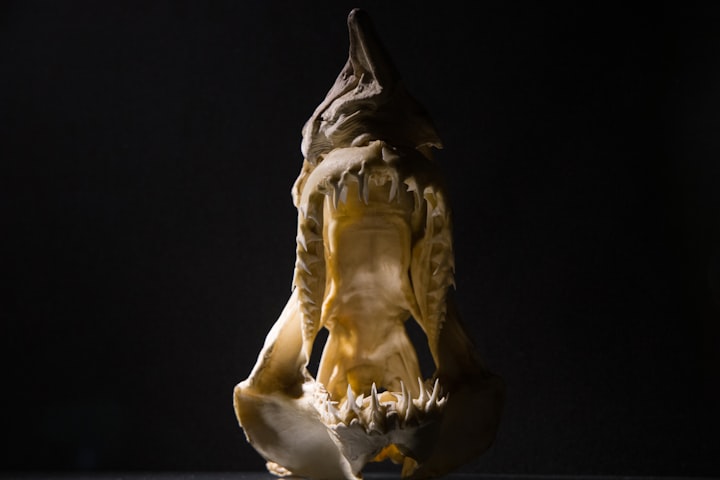
We all know that the deep ocean is a weird place. It's almost like an animal all on its own, right? Full of parts and pieces that each serve their own little purpose, but looking too close is freaky in a myriad of different ways, so most people just kind of avoid doing that.
It's kind of hard to see down there, anyway, because the only light is the one that the critters themselves produce. More than 50 percent of deep-sea animals make some kind of light (per Smithsonian). Blue light travels farther through water than any other wavelength, so that's the one those beasties usually evolve - they can see more predators, and more prey. Red light, therefore, doesn't really exist to those living in the deep dark, which means that there's really no reason to be able to see it. This also explains why a lot of deep-sea fish are red, actually; if there's no red light down here, there's no light for the red animals to reflect, and they remain basically invisible (per the NOAA).
There is one animal, however, that can twist this rule: the stoplight loosejaw.
It's a name that paints a picture, and an accurate one. The name "loosejaw" comes from this thing's ability to unhinge basically its entire skull and use it like a mousetrap, which it can do incredibly quickly. In fact, it evolved to not have a "floor" to its mouth, just so that it could close its jaws faster (per this morphology study), snapping up any hapless prey that comes near in the dark.
To the stoplight loosejaw, however, the water isn't dark at all. Instead, it's lit up in red.
Here's the thing: most deep-sea animals can't see the color red whatsoever (per Oceana). Because those wavelengths don't reach that far underwater, there's just no reason for that ability to stay around. Animals that can see red don't have an advantage down where red light doesn't reach - and that's where the stoplight loosejaw comes in. It evolved bioluminescence like so many of its peers, but its light is unique in that it's entirely red. It can hunt down its prey with perfect stealth, colored a deep black-brown that camouflages it against the water, so it's not reflecting any of the red light it's making. Not like it would matter, anyway - nothing could see it. Meanwhile, its prey doesn't even know it's being watched. It can't see the glaring spotlight getting closer and closer before the loosejaw uses that namesake to claim its prey. Dinner.
The baffling thing is, that light doesn't even start as red. It starts out as closer to blue, a shorter wavelength that gets absorbed by fluorescent pigments located in the light organ (called the photophore), and those pigments glow a bright red (per the Ecology, Evolution, and Marine Biology section of the University of California). From there, though, the question remains: if no other deep-sea fish sees red, then how does the loosejaw?
Well, some deep-sea fish can see red. Namely, relatives of the stoplight loosejaw from the genera Aristostomias and Pachystomias have "visual pigments" in the eye that translate excitement from light into nerve signals, which is the deep-sea equivalent to the cones in the human eye. The stoplight loosejaw, Malacosteus niger, can't actually see red by default; instead, it has a compound inside the eye that translates long wavelengths back into shorter ones that it can actually see, acting something like an antenna or a funnel. It basically just makes the rest of its eye accommodate the lack of a visual pigment by shoving a longer wavelength into those receptors anyway. Funnily enough, the compound that makes this possible at all is a derivative of chlorophyll - the same stuff that makes plants green (per this research article).
So, most deep-sea fish can't see red, except for this particular group, but not without help, because they have to use a specific compound to see red that doesn't start as red because this group makes blue light that makes something else glow red, which they can see but their prey can't because of something very similar to the green color inside of plants, and nothing else here has anything to do with the color green.
And its mouth doesn't have a floor, just so that it can close its jaws really fast.
Don't worry, though! You're not going to encounter this thing on a beach vacation, specifically because it lives stupid deep underwater, where these adaptations actually come in handy. Just don't plan any excursions in a specialized submersible headed for water deeper than...oh, 500 meters (according to the IUCN), and you should be fine.
Probably.
About the Creator
Nick Funk
Hi, I'm Nick. I like fantasy and sci-fi and usually write stories with a queer and/or monstrous focus. I enjoy riddles and poetry as well. I also write Wikipedia articles for fun, if that tells you anything about me.






Comments
There are no comments for this story
Be the first to respond and start the conversation.